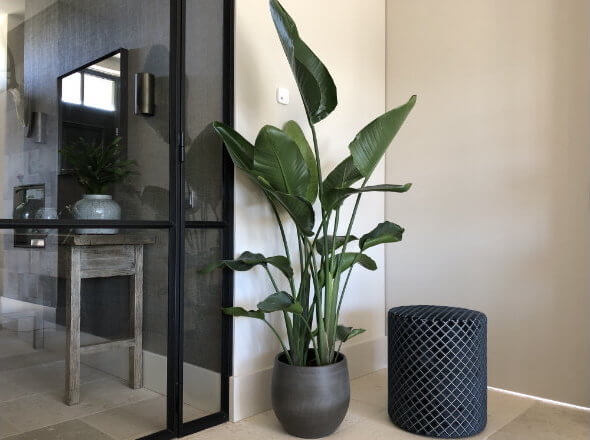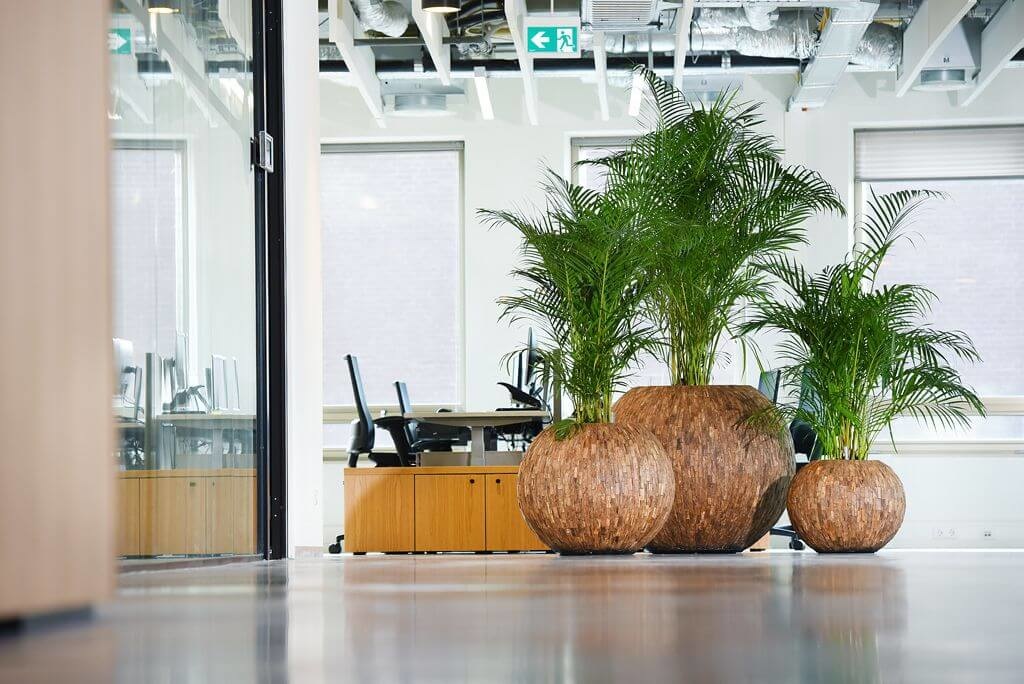
Office
Dracaena
The Dragon's Blood Tree is a good asset to any office, whether this is your own home office or in your own company, plants always do well! The Dragon's Blood Tree is originally from Africa and is used to being in dry areas. In addition, the Dracaena plant also occurs in Asia and Central America, which ensures that there are many different Dracaena species that you can choose from. The easiest way to recognize a Dracaena are the stripes on the leaves and the multiple trunks that the plant has.
Well-known species of the Dragon Blood Tree, such as the Dracaena Fragrans , Dracaena Marginata and the Dracaena Compacta are very popular. Be aware that the dracaena is poisonous and can be dangerous for pets. Furthermore, the plant is easy to care for. The plant is naturally used to a dry environment and does not need much light. Part shade is sufficient for the Dragon Blood Tree, as it only needs 3 hours of direct sunlight. It is not necessary to water the Dracaena much, in the summer water every 3 weeks and in the winter every 5 weeks. The Dracaena is ideal for the office, as watering is sometimes forgotten here, the plant can have this! Curious about more care tips for the Dracaena, read more .
Strelitzia Nicolai
The Bird of Paradise plant is a graceful plant that gives the office more atmosphere and inspiration. The plant is also called the Strelitzia and comes in many varieties. Of these, the Strelitzia Nicolai is the most popular, the reason for this is because with the large leaves they can transform an entire room with a slightly tropical touch. Just like the Dracaena, the Strelitzia plant is originally from South Africa, so the plant is used to a warm and dry climate. Because the Strelitzia is a very popular plant, there are also many Strelitzia varieties available. Some popular Strelitzia species are the Strelitzia Nicolai are the Strelitzia Reginae and Strelitzia Augusta . There are even real Strelitzia Nicolai XXL variants and variants with flowers!
Another reason why the Bird of Paradise plant is so popular is because the Strelitzia care is very simple. The plant only needs water once a week, make sure that the soil of the plant is always dry before the Strelitzia is watered. The location of a Strelitzia is a place where there is a lot of light. The plant is therefore always best placed in front of a window. The Strelitzia Nicolai is one of the few plants that is grown under direct sunlight. Curious about more care tips for the Strelitzia, read more .
Ficus Elastica - Indian Rubber Tree
The Indian Rubber Tree is one of the many Ficus species in circulation. The Ficus has been a very popular houseplant for many years that is often seen in offices and living rooms. Just like the aforementioned plants, the plant is found in Africa, but can also be found in South America and in the East of the world such as Australia and Asia. The plant for the office that cannot be missed is the Ficus Elastica, also known in the Netherlands as the Indian Rubber Tree. This office plant is loved for its large, iconic leaves. The leaves are very shiny, which means that the Ficus is also compared to a rubber tree. There are several popular Ficus Elastica species such as the Ficus Elastica Tineke , Ficus Elastica Robusta and the Ficus Elastica Belize .
The Rubber Tree is very easy to care for, watering the Ficus Elastica is almost not necessary. This is because the Rubber Tree does not have a very fast growth rate due to the non-tropical environment in which it is located. However, if it is warm and sunny, the Rubber Tree can receive plenty of water. In winter, the Rubber Tree needs less, only when the soil is completely dry. Please note, at living room temperatures it is possible that the Rubber Tree will suffer from root rot more quickly, check regularly that the houseplant does not get wet feet. The Ficus Elastica location can be found in bright indirect sunlight, preferably about 2 meters away from a window (facing south). Curious about more care tips for the Ficus Elastica, read more .
Kentia palm
The Kentia is a houseplant that is most often found in the office. Why? Because this palm hardly needs to be looked after. Of course, the plant needs water, but this is not necessary on a frequent basis. The Kentia, also called the Kentia palm, is a plant originally from a small island east of Australia. The Kentia palm has the official name Howea Forsteriana and was discovered in 1870 by a German-Australian botanist. The Kentias can grow very large, there are companies that rent out these large plants. Young Kentia palms can withstand low humidity and do not need a lot of light. Not even during the winter.
The Kentia palm nursing is very easy. The plant does not need too much light and the Kentia needs to be watered once every 5 days. During the winter period this is every 10 days. If the plant is watered, it is wise to first check how much the Kentia needs. You will discover this by trying several times. Whenever the soil has completely dried up, it is time to water more. Using a saucer under the pot can prevent the Kentia palm from getting too much and eventually suffering from root rot. Almost any location can be chosen for the location of the Kentia, the light requirement is low. If you still want to see the Kentia grow faster, it is best to place it near a window (4 meters), but beware, never put the Kentia palm in direct sunlight. Curious about more care tips for the Kentia palm, read more .








